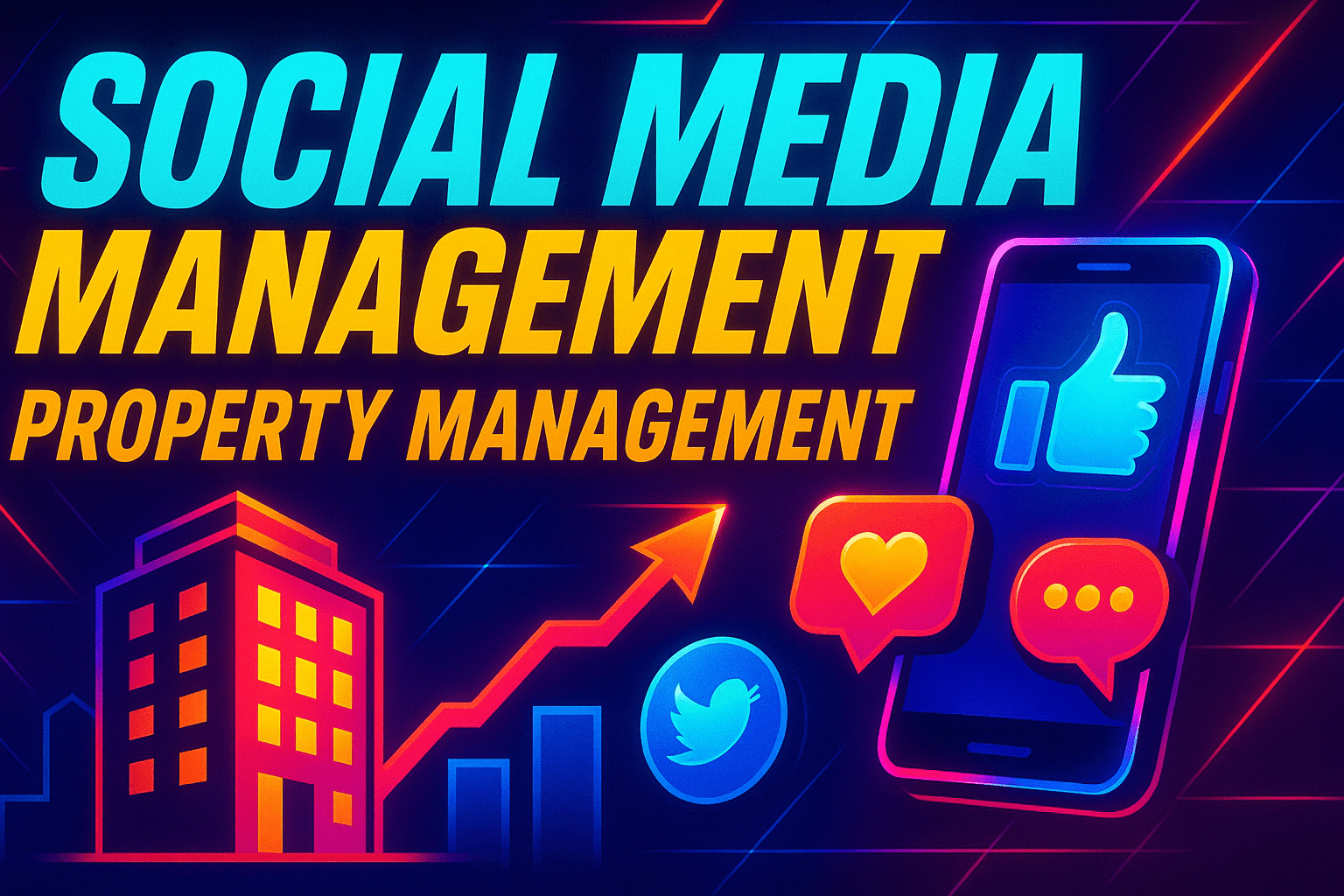Social Media Management for Consultants & Coaches: Turn Engagement Into Revenue
by Design Delulu Editorial · October 9, 2025

Smart, fast, and measurable. Here's how social media management helps consultants & coaches win.
For consultants and coaches, social media isn't just about visibility—it's about building trust, demonstrating expertise, and converting engaged audiences into high-value clients. Unlike product-based businesses, your success depends on personal credibility and the ability to communicate transformation. Every post, comment, and story becomes a touchpoint in your client acquisition journey.
The challenge? Most consultants and coaches struggle to maintain consistency while juggling client work, creating quality content that positions them as thought leaders, and actually converting followers into booked calls. Professional social media management solves this by implementing strategic systems that work even when you're busy delivering results for existing clients. It's the difference between sporadic posting and a predictable pipeline of qualified leads who already trust your expertise before they ever book a discovery call.

Why Social Media Management Matters for Consultants & Coaches
The consulting and coaching landscape has fundamentally shifted. Your potential clients are researching you long before they reach out—scrolling your content, watching your stories, and evaluating whether you understand their challenges. A dormant or inconsistent social presence signals unreliability, while strategic, consistent content builds the know-like-trust factor that converts browsers into buyers.
Strategic social media management delivers three critical outcomes:
- Authority positioning: Regular, high-value content establishes you as the go-to expert in your niche, making price objections disappear
- Relationship building at scale: Engagement systems let you nurture hundreds of prospects simultaneously without sacrificing the personal touch
- Predictable lead generation: Content pillars and conversion pathways create a consistent flow of qualified discovery calls and applications
Consider this: A business coach posting inconsistently might book 2-3 calls per month from referrals alone. That same coach with strategic social media management—leveraging content repurposing, community engagement, and social proof—can generate 15-20 qualified leads monthly. The math is simple: more visibility plus strategic positioning equals more revenue.
Core Components of Effective Social Media Management
Successful social media management for consultants and coaches requires more than random posting. It's a systematic approach that combines content strategy, community building, and conversion optimization.
Platform-Native Creative That Converts
Each platform has its own language and format preferences. What works on LinkedIn won't necessarily resonate on Instagram or TikTok. Platform-native creative means designing content specifically for how users consume on each channel:
- Short-form video: Instagram Reels, TikTok, and YouTube Shorts for quick wins, thought leadership snippets, and client transformation stories
- Carousel posts: Multi-slide educational content perfect for frameworks, step-by-step processes, and before/after case studies
- Live sessions: Real-time Q&A, masterclasses, and behind-the-scenes glimpses that build authentic connection
- Long-form posts: LinkedIn articles and Facebook posts that showcase deep expertise and thoughtful analysis
The key is creating once, adapting everywhere—taking a single core message and reformatting it for maximum reach across platforms without starting from scratch each time.
Community Management & Engagement Systems
Posting content is only half the equation. Community management transforms passive followers into active advocates who refer clients, share your content, and create social proof that attracts more ideal clients.
A robust engagement system includes:
- Response protocols: Timely, thoughtful replies to comments and DMs that keep conversations flowing
- Proactive engagement: Strategic commenting on industry posts, potential client content, and strategic partner profiles
- Community nurture sequences: Regular check-ins with engaged followers to move them closer to booking a call
- User-generated content amplification: Showcasing client wins and testimonials to build credibility
Think of community management as the digital equivalent of networking events—except you're building relationships 24/7 without leaving your office.
Content Pillars & Repurposing Workflows
Content pillars are the 3-5 core themes that define your expertise and resonate with your ideal client. For a marketing consultant, these might include: growth strategy, content systems, client acquisition, team building, and mindset. Every piece of content you create should ladder up to one of these pillars.
The repurposing workflow maximizes every piece of content you create:
- Core content creation: Start with long-form content (podcast episode, client workshop, or blog post)
- Extract micro-content: Pull out 5-10 quotable moments, insights, or frameworks
- Format for platforms: Transform each insight into platform-specific posts (Reels, carousels, text posts)
- Schedule strategically: Distribute across weeks to maintain consistent presence
- Engage and optimize: Monitor performance and double down on what resonates
This approach means one hour of focused content creation can fuel 2-3 weeks of daily social media posts across multiple platforms.
Social Listening to Inform Content & Offers
Social listening is your competitive intelligence system. By monitoring conversations in your industry, tracking what questions your audience asks, and identifying emerging trends, you stay ahead of the curve and create content that addresses real-time needs.
Practical social listening tactics:
- Track keywords related to your expertise and ideal client pain points
- Monitor competitor content to identify gaps in the market
- Join industry Facebook groups and LinkedIn communities to understand trending challenges
- Save and categorize frequently asked questions for future content creation
- Analyze which content formats and topics drive the most engagement and conversions
This intelligence doesn't just inform content—it shapes your service offerings, pricing strategy, and messaging framework. You're no longer guessing what your market needs; you're responding to explicit demand.
The Strategic Social Media Management Process
Effective social media management follows a proven methodology that takes you from inconsistent posting to strategic content marketing machine.
Phase 1: Discovery & Goal Setting
Success starts with clarity. Before creating a single post, we dig deep into three critical areas:
- Business outcomes: What does social media need to deliver? More discovery calls? Higher-ticket clients? Speaking opportunities? Be specific about revenue targets and lead volume.
- Audience intelligence: Who exactly is your ideal client? What keeps them up at night? What language do they use to describe their problems? Where do they spend time online?
- Constraints and resources: How much time can you realistically dedicate? What existing content can be repurposed? What budget exists for tools, ads, or outsourcing?
This discovery phase typically takes 1-2 weeks and includes competitive analysis, content audits, and goal-setting workshops that create alignment before execution begins.
Phase 2: Strategy Blueprint
With goals established, we build the strategic architecture that guides all content decisions:
- Platform selection: Focus on the 1-2 platforms where your ideal clients actively engage (usually LinkedIn for B2B consultants, Instagram for coaches)
- Content pillar definition: Establish 3-5 core themes that showcase expertise and resonate with your audience
- Content calendar framework: Design a sustainable posting rhythm (frequency, formats, timing) based on your capacity
- Engagement protocol: Create systems for responding to comments, DMs, and proactive networking
- Conversion pathway: Map the journey from follower to client, including lead magnets, email sequences, and booking processes
- Measurement dashboard: Define KPIs and create tracking systems to monitor progress toward goals
The blueprint is your playbook—a reference document that ensures consistency even when you're busy with client work or bringing on team members.
Phase 3: Build & Launch
With strategy in place, it's time to execute. The build phase focuses on creating assets, implementing systems, and establishing operational rhythm:
- Content batching session: Create 4-6 weeks of content in focused creation sprints (3-4 hours)
- Template library: Design reusable templates for each content format to speed up future creation
- Scheduling system: Load content into scheduling tools (Later, Buffer, Hootsuite) with optimal posting times
- Tracking implementation: Set up UTM parameters, conversion pixels, and analytics dashboards
- Team training: If applicable, onboard virtual assistants or team members on protocols and brand voice
The goal is launching with momentum—not perfection. Ship content, gather data, and prepare to iterate based on real-world performance.
Phase 4: Optimize & Scale
The optimization phase is where good social media management becomes great. Data-driven iteration separates consultants who get sporadic results from those who build predictable pipelines.
Weekly optimization activities:
- Review engagement metrics (saves, shares, comments) to identify top-performing content themes
- Analyze conversion data to understand which posts drive discovery calls or email signups
- A/B test content formats (carousel vs. video), hooks, and calls-to-action
- Adjust posting frequency or timing based on when your audience is most active
- Expand on winning content—if a post about pricing strategy performs well, create a series around it
Quarterly strategic reviews:
- Assess progress toward revenue and lead generation goals
- Refine content pillars based on what's resonating and evolving market needs
- Evaluate new platform opportunities or content formats (e.g., adding a newsletter or podcast)
- Update conversion pathways to reduce friction and improve close rates
This continuous improvement approach means your social media presence gets stronger over time, compounding results as you build authority and audience.

What You'll Receive: Core Deliverables
Professional social media management delivers tangible assets that support consistent execution:
- Content Pillars Document: Your 3-5 core themes with messaging frameworks, topic ideas, and example posts for each pillar
- Monthly Content Plan: A calendar with planned posts, optimal posting times, and content mix (educational, engagement, promotional)
- Creative Template Library: Branded Canva templates for stories, carousels, quote graphics, and Reels that maintain visual consistency
- Engagement SOP: Standard operating procedures for responding to comments, handling DMs, and proactive engagement activities
- Analytics Dashboard: Custom reporting template tracking key metrics (reach, engagement, leads, conversions)
- Repurposing Workflow: Step-by-step process for transforming one piece of content into multiple platform-specific posts
These deliverables create operational efficiency—reducing the mental load of 'what should I post today?' while maintaining strategic alignment.
Best Practices for Social Media Success
Years of managing social media for consultants and coaches have revealed patterns that separate high performers from everyone else:
Start with High-Impact Activities
Not all social media activities generate equal results. The 80/20 rule applies: 20% of your efforts will drive 80% of your results. Prioritize:
- Content that directly addresses your ideal client's biggest pain point
- Engagement with warm leads and strategic partners over random followers
- Platforms where your ideal clients actively consume content (quality over quantity)
- Content formats that showcase transformation (case studies, before/after, testimonials)
Resist the temptation to be everywhere at once. Master one platform before expanding to others.
Pair Creative with Measurement
Every piece of content should have a purpose and measurable outcome. Before posting, ask: 'What action do I want someone to take after seeing this?'
- Educational posts → Goal: Saves and shares (signal of value), metric: save rate
- Engagement posts → Goal: Comments and conversations, metric: comment rate
- Conversion posts → Goal: Link clicks or DM inquiries, metric: click-through rate
- Authority posts → Goal: Follows from ideal clients, metric: follower growth rate
Track these metrics weekly and double down on what's working while phasing out underperforming content types.
Build Systems for Scale
Consistency beats intensity. The consultant who posts strategically 3x/week for six months will outperform the one who posts daily for three weeks then disappears. Systems create consistency:
- Batching: Create multiple posts in one focused session rather than daily scrambling
- Templates: Use design and caption templates to reduce creation time by 70%
- Repurposing: One core idea becomes 10+ posts across formats and platforms
- Automation: Schedule posts in advance, use saved replies for common DMs, automate routine engagement
The goal is removing friction so maintaining your social presence becomes effortless rather than exhausting.
Close the Loop with Regular Reviews
Social media management isn't 'set it and forget it.' Schedule weekly 30-minute review sessions to assess performance:
- What content drove the most engagement this week?
- Which posts generated discovery call bookings or email signups?
- What questions came up in comments or DMs that should inform future content?
- Are you on track to hit monthly lead generation goals?
Additionally, conduct quarterly strategic resets (60-90 minutes) to evaluate if your content pillars still align with your business goals and market needs. Markets shift, your services evolve—your social strategy should too.
Industry-Specific Strategies for Consultants & Coaches
While core social media principles apply universally, consultants and coaches benefit from niche-specific tactics that address their unique business model:
Map Content to the Buyer Journey
Consulting and coaching are high-consideration purchases. Your content needs to address different buyer stages:
- Awareness stage: 'Problem identification' content that helps prospects recognize they have an issue you solve (e.g., '5 signs your business has a revenue problem, not a marketing problem')
- Consideration stage: 'Solution education' content explaining your methodology and approach (e.g., 'Why fixing your offer before scaling marketing saves $50K+')
- Decision stage: 'Social proof and differentiation' content showcasing results and your unique process (e.g., case studies, testimonials, your framework)
Maintain a content mix that addresses all three stages—typically 40% awareness, 40% consideration, 20% decision content.
Lead with Social Proof Early
Trust is the currency of consulting and coaching. Skeptical prospects need evidence you can deliver before they'll invest $5K-$50K+ in your services. Integrate social proof throughout your content:
- Client testimonial Reels showing transformation and specific results
- Screenshot carousels featuring DMs from satisfied clients
- Case study breakdowns walking through problem → solution → results
- User-generated content from clients implementing your frameworks
The goal is making the buying decision feel low-risk by demonstrating a proven track record.
Maintain a Single Source of Truth Dashboard
Consultants and coaches often juggle multiple metrics—social engagement, email list growth, discovery calls booked, proposals sent, closed deals. Without centralized tracking, you can't identify what's actually driving revenue.
Create a dashboard (Google Sheets, Airtable, or specialized tools like HubSpot) that connects:
- Social media performance (followers, engagement rate, link clicks)
- Lead generation metrics (email signups, discovery calls booked, application submissions)
- Conversion metrics (show rate, proposal-to-close rate, average deal size)
- Revenue attribution (which social posts or campaigns led to closed clients)
Review this dashboard weekly to understand which social media activities have the highest ROI, then allocate more resources there.
Ship Small, Test Fast, Compound Wins
Perfectionism kills momentum. The consultant who ships 80% complete content today beats the one who waits months for 100% perfect content. Adopt an iterative mindset:
- Launch with a basic content plan and refine based on performance data
- Test different hooks, formats, and calls-to-action to see what resonates
- Start on one platform, master it, then expand to others
- Build simple systems first, add sophistication as you scale
Each small test provides data. Over time, these insights compound into a deeply optimized social media engine tailored specifically to your ideal client and unique positioning.

Measuring Success: Key Metrics That Matter
Vanity metrics (followers, likes) feel good but rarely correlate with revenue. Focus on metrics that directly connect to business outcomes:
Tier 1: Revenue Metrics (Most Important)
- Discovery calls booked: The number of qualified consultations scheduled from social media
- Proposal-to-close rate: Percentage of proposals that convert to paying clients
- Customer acquisition cost (CAC): Total social media investment ÷ new clients acquired
- Client lifetime value (LTV): Average revenue per client acquired through social channels
Tier 2: Lead Generation Metrics
- Lead magnet downloads: Email signups from social media traffic
- Application submissions: Completed applications for your program or service
- DM inquiries: Direct message conversations about working together
- Website traffic: Link clicks from social platforms to your site
Tier 3: Engagement & Reach Metrics
- Engagement rate: (Likes + comments + saves + shares) ÷ reach
- Save rate: Percentage of people who save your content (signals high value)
- Share rate: How often your content gets shared (amplifies reach)
- Follower growth rate: Net new followers per month from your target audience
The hierarchy matters: A post with 1,000 views and zero discovery calls is less valuable than a post with 100 views that books three consultations. Always tie social metrics back to revenue impact.
Common Mistakes to Avoid
Even experienced consultants and coaches make predictable social media mistakes. Avoid these pitfalls to accelerate results:
- Random posting without strategy: Posting whatever comes to mind leads to inconsistent messaging and confused audiences. Stick to your content pillars.
- Ignoring community management: Broadcasting content without engaging creates one-way communication. Respond to every comment in the first hour; it signals value and boosts algorithmic reach.
- Selling too aggressively too early: Leading with sales pitches before building trust repels ideal clients. Follow the 80/20 rule: 80% value-driven content, 20% promotional.
- Neglecting content repurposing: Creating unique content for each platform is unsustainable. Master repurposing to maximize content ROI.
- Chasing trends over brand building: Jumping on every viral trend dilutes your authority. Only participate in trends that align with your expertise and audience.
- Inconsistent posting: Sporadic activity trains your audience not to expect regular content. Commit to a realistic cadence and maintain it.
- Forgetting calls-to-action: Posts without clear next steps waste engagement opportunities. Every post should guide followers toward a specific action.
Getting Started: Your First 30 Days
Ready to implement strategic social media management? Here's your 30-day roadmap:
Week 1: Foundation & Strategy
- Complete a content audit of your existing social profiles
- Define your 3-5 content pillars based on ideal client needs
- Research competitors to identify content gaps and opportunities
- Set specific 90-day goals (e.g., 'Book 10 discovery calls from LinkedIn')
- Choose 1-2 platforms to focus on initially
Week 2: Content Creation & Systems
- Batch-create 20-30 pieces of content across your pillars
- Design 5-10 Canva templates for consistent branding
- Set up scheduling tools (Later, Buffer, or Hootsuite)
- Create saved replies for common DM questions
- Build a simple analytics tracking spreadsheet
Week 3: Launch & Engagement
- Schedule 2-3 weeks of content in advance
- Implement daily engagement routine (15-20 minutes: respond to comments, proactive networking)
- Join 3-5 relevant communities or groups where ideal clients gather
- Create your first conversion-focused post with a clear CTA
- Send outreach DMs to 10-15 warm connections
Week 4: Analysis & Optimization
- Review which content performed best (saves, comments, shares)
- Identify which posts drove traffic or inquiries
- Create 5 more posts in the style/format of your top performers
- Refine your engagement strategy based on response patterns
- Plan next month's content calendar incorporating lessons learned
By day 30, you'll have momentum, data, and a repeatable system that makes social media a predictable lead generation channel rather than a time-consuming mystery.
Frequently Asked Questions
Let’s level up your Consultants & Coaches business
Need services that actually move the needle for Consultants & Coaches? See our approach, pricing, and timelines—then book a quick call.
Additional Resources
- Schedule Your Strategy Call
Book a complimentary 30-minute consultation to discuss your social media goals, current challenges, and how our management services can accelerate your growth.
- View Our Portfolio
Explore case studies and examples of social media transformations we've delivered for consultants, coaches, and service-based businesses across industries.
- Access Free Resources
Download free templates, checklists, and tools including content calendars, engagement trackers, and social media audit worksheets to jumpstart your strategy.
Related Reading

Professional social media management for property management companies. Attract quality tenants, reduce vacancy rates, and build community trust with strategic content that converts.

Discover expert social media management strategies for yoga studios. Learn content pillars, engagement tactics, and proven systems to grow your community and bookings in 2026.
